Twerk
March 7, 2019 | Learning | 5 minute read
Hot summer days are a busy time at Holkham NNR, especially on the beach. When a common seal pup washed ashore last year it wasn’t long before a crowd gathered and we received a call from the public. Both common and grey seals are a regular sight on the Norfolk coast and as Holkham is close to the UK’s largest seal colony at Blakeney Point, finding seals hauling out on the shore isn’t uncommon. The Nature reserve wardens at Holkham NNR are trained to capture and handle seals by the BDLMR and the RSPCA. Seals may look docile and cute especially young white pups, but they can deliver a nasty bite both to humans and dogs.
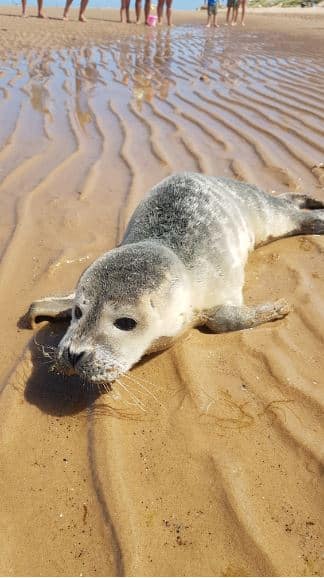
The seal at Holkham beach. Unlike Grey seals, Common Seals are born with the ability to swim and are a lot more independent but they still rely on their mother’s milk for up to 4 weeks.
When I arrived the seal was clearly not well. There was liquid oozing from its mouth and nose and on closer inspection it had bleeding lesions on its flippers. Using a towel and a little persuasion I scooped up the seal into an animal crate and whisked her off to the seal hospital at the Sealife Centre at Hunstanton.
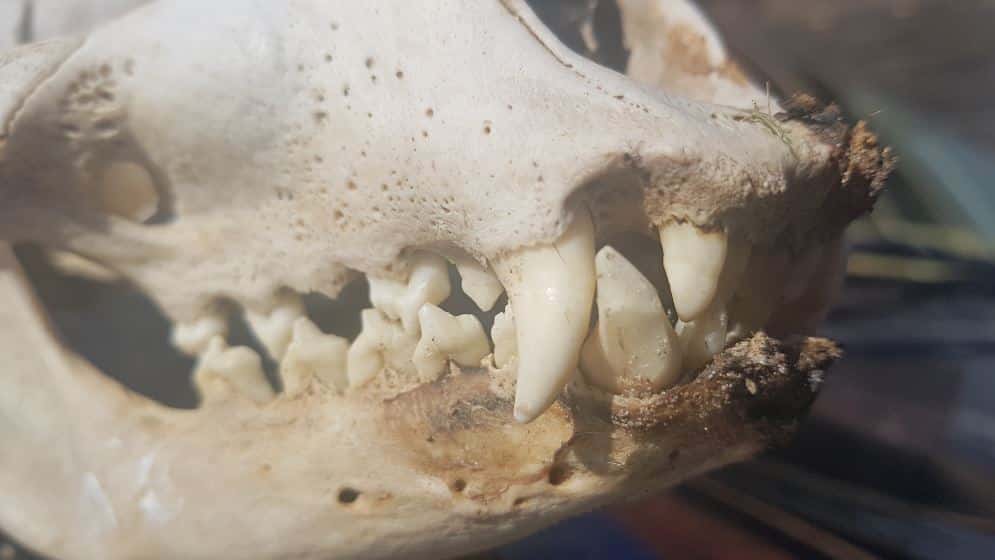
The teeth of a female Grey seal. Seals have around 34 to 38 teeth. They use their pointy teeth to grasp and shred fish that are too big to swallow whole, even the molars are pointed.
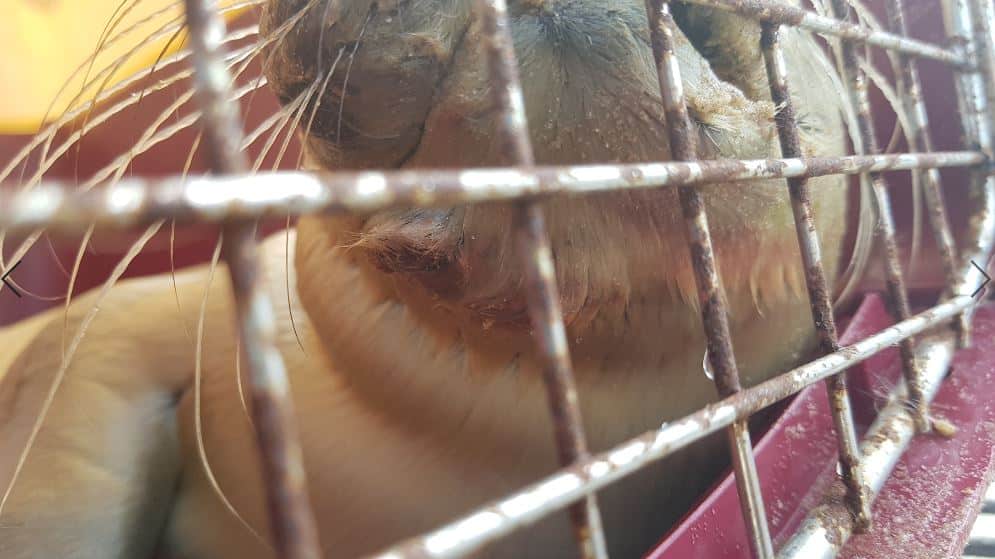
A bleeding lesion underneath the seal’s chin. Seal pox is transferable to humans (another reason to stay away) and can result in nodules forming around the infected area.
I then got to name her; dance names were the theme in 2018. Being late in the season most of the obvious names had been taken, Cha Cha, Ballet, Rumba etc. So, I had to think outside the box. At least that’s the excuse I used, when I told my boss I had named her Twerk! What can I say it’s not every day you get to name a seal, so you might as well make it memorable!
At the Sealife hospital Twerk was diagnosed with Seal pox. She had a long road to recovery. It is a highly infectious virus (a parapoxviruse) spread through skin-to-skin contact so Twerk had to spend the first few months in quarantine. She soon became well known for her ferociousness. After the all clear was given she was moved to an indoor cubical where she was tube fed a ‘fish soup’ before moving to Whitebait and Herring. Like all recovering seals she was fed 4 times a day and had her temperature and weight checked daily. Once she was heavy enough, she was moved to the outdoor swimming pool where she had the company of other recovering seals and could be seen by visitors. Eventually, Twerk had enough blubber to be released back into the sea.
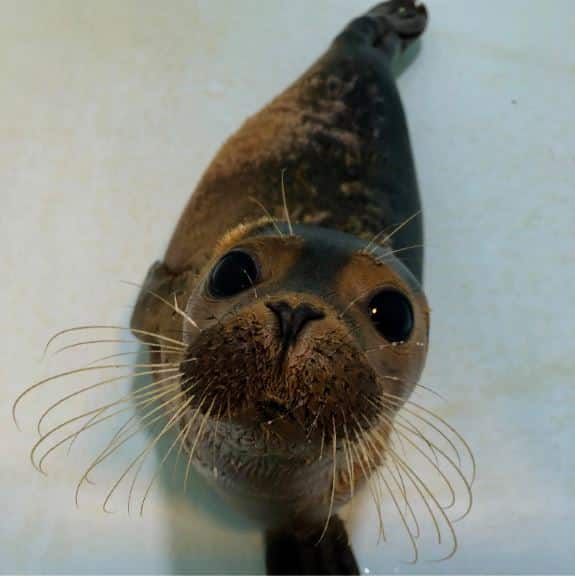
Twerk on her way to the big outdoor swim pool.
Twerk recovered well in the Hunstanton Sealife Seal hospital. After arriving on the August 2nd underweight, sick and tired. She was released (rather hesitantly) on the 13th December (by when she had grown to an impressive 30 kg) back into the North Sea. While Twerk’s recovery was a great success thanks to the hard work of the Seal Hospital staff we mustn’t forget that Common seals like Twerk are under threat.
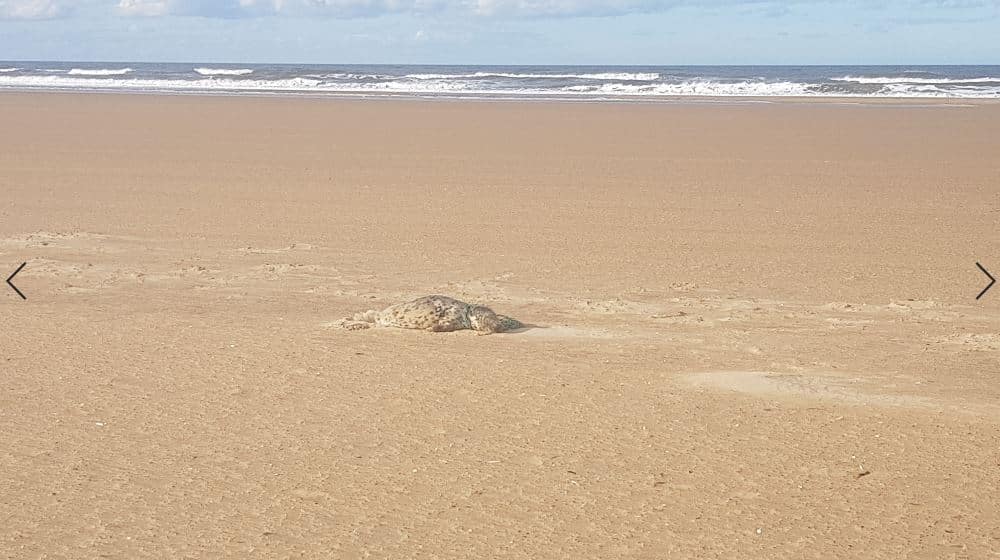
A recent Grey seal with a fishing net entangled around it’s neck. With an increasing number of seals being found along the North Sea coast in a similar state, the threats to our marine life is only increasing.
If you do see a seal anywhere on the coast give it plenty of space and keep dogs away. This is especially true for mothers with pups. Seals are easily spooked so keep your distance, allow at least 50m between you and the seals and if in a boat or kayak, maintain a distance of at least 100m where possible. If you suspect a pup has been abandoned or a seal is injured and in need of attention, keep your distance and call BDMLR rescue hotline:01825 765546 (Monday-Friday 9am-5pm) 07787 433412 (Out of office hours and Bank Holidays) BDMLR rescue hotline:01825 765546 (Monday-Friday 9am-5pm) 07787 433412 (Out of office hours and Bank Holidays) or RSPCA hotline (England & Wales): 0300 1234 999
View all latest blog posts here.
Back to Journal Back to Journal



